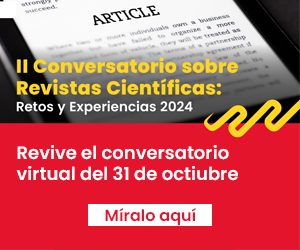Adaptation, validation and cut-off values of the Ages & Stages questionnaire 3th edition (ASQ-3) Spanish version in a Lima, Perú urban setting.
DOI:
https://doi.org/10.20453/rnp.v84i2.3995Keywords:
ASQ-3, children, psychomotor development, validity, reliabilityAbstract
Objective: A cultural-linguistic adaptation of the Age and Stages Questionnaire third edition (ASQ-3)-Spanish version was performed in order to determine its reliability, validity and cut-off points in an urban population and pediatric outpatient setting of Lima, Perú. Material and Methods: Questionnaire forms were applied to parents of children between 1 to 66 months old of age, chosen through a convenience sampling method. Results: A total of 5,830 questionnaires were applied to parents of 3,507 children, 2 667 (45.7%) of whom had between 14 and 36 months of age. The general internal consistency and that of five specific areas, measured by means of the Ordinary alpha index oscillated between 0.70-0.94. Content validity by judges’ criteria, using the index by Lawshe method, the Aiken V coefficient, or both, was valid for most of the questionnaires. The biserial item-test correlations were > 0.30 for most items (p <0.010). The construct validity according to the factorial analysis, determined that the five factors or areas of the ASQ-3 were adequate. Cut-off points were determined by age and area intervals of the ASQ-3. Conclusions: The Spanish version of the ASQ-3 proved to be a reliable and valid tool to survey and screen the psychomotor development of children under 5 years of age in an urban outpatient area setting of Lima, Perú.
Downloads
References
Johnson CP, Blasco P. Infant Growth and Development. Pediatrics in Review. 1997; 18 (7): 224-242.
Scharf RJ, Scharf GJ, Stroustrup A. Developmental Milestones. Pediatrics in Review. 2016; 37;25-38.
Macias MM, Lipkin PH. Developmental and behavioral surveillance and screening within the medical home. En: Voigt RG, Macías MM, Myers SM, Tapia CD. Editores. American academy of pediatrics. Developmental and behavioral pediatrics. 2da edición. Illinois, USA: AAP; 2018.p. 135-163.
Marks KP, La Rosa AC. Understanding developmental- behavioral screening measures. Pediatr Rev. 2012;33 (10):448-458.
Drotar D, Stancin T, Dworkin PH, Sices L, Wood S. Selecting developmental surveillance and screening tools. Pediatr Rev. 2008;29 (10): e52-e58.
Squires J, Bricker D. Ages & Stages Questionnaires: Third edition (ASQ-3), in Spanish. Baltimore, MD. USA: Paul H. Brookes Publishing Co Inc.; 2009.
Lipkin PH, Macias M., Baer-Chen B, et al. Trends in pediatricians’ developmental screening: 2002– 2016. Pediatrics. 2020;145(4): e20190851.
Council on Children with Disabilities, Section on Developmental Behavioral Pediatrics, Bright Futures Steering Committee, Medical Home Initiatives for Children with Special Needs Project Advisory Committee. Identifying infants and young children with developmental disorders in the Medical Home: An algorithm for developmental surveillance and screening. Pediatrics. 2006; 118:405– 420.
Lipkin PH, Macias M. AAP Council on Children with Disabilities, Section on Developmental and Behavioral Pediatrics. Promoting optimal development: Identifying infants and young children with developmental disorders through developmental surveillance and screening. Pediatrics. 2020;145(1): e20193449.
Fiszbein A, Guerrero G, Rojas V. Medición del Desarrollo Infantil en América Latina: Construyendo una agenda regional. Inter-American Dialogue & GRADE. The dialogue. 2016: 1-11.
Squires J, Twombly E, Bricker D, Potter L. ASQ-3 User’s guide. Inc. Baltimore, MD. USA: Paul H. Brookes publishing Co; 2009.
Squires J, Twombly E, Bricker D, Potter LW. Psychometric studies of ASQ, third edition. Excerpted from: ASQ-3 User’s Guide. Baltimore, MD.USA: Paul H. Brookes publishing Co; 2009.
Ortiz-León S, Granados-Rojas A, Cavazos-Olivo J, et al. Internal and inter-rater reliability of the ASQ-3 in Mexican preschoolers. Salud Mental. 2018;41(2): 65-72.
Filgueiras A, Pires P, Maissonette S, Landeira- Fernandez J. Psychometric properties of the Brazilian-adapted version of the Ages and Stages Questionnaire in public child daycare centers. Early Hum Dev. 2013;89(8):561-576.
Rubio-Codina M, Caridad-Araujo M, Attanasio O, Grantham-McGregor S. Concurrent validity and feasibility of short tests currently used to measure early childhood development in large scale studies: Methodology and results. Washington DC: Inter-American Development Bank (IDB); 2016.
Armijo I, Schonhaut L, Cordero M. Validation of the Chilean version of the Ages and Stages Questionnaire (ASQ-CL) in community health settings. Early Hum Dev. 2015; 91(12): 671-6.
Romero-Otalvaro A, Grañana N, Gaeto N, et al. ASQ- 3: Validación del Cuestionario de Edades y Etapas para la detección de trastornos del neurodesarrollo en niños argentinos. Arch Argent Pediatr. 2018;116 (1):7-13.
Caridad-Araujo M, Dormal M, Lazarte F, Oré B, Rubio-Codina M. Adaptación, validación y propiedades psicométricas del ASQ-3 y del Bayley- III en niños menores de 42 meses de zonas rurales de Perú. Banco Interamericano de Desarrollo. Nota técnica del BID N°1685. Washington DC: Banco Interamericano de Desarrollo; 2019.
Tarazona CD, Campos S M. Estudio de validez concurrente entre una versión culturalmente adaptada del Age and Stages Questionnaire-3 y la versión completa del Battelle developmental inventory en una muestra de niños peruanos de 24 a 44 meses. DGSE-MIDIS. 2014;1: 1-6.
Moodie S, Daneri P, Goldhagen S, Halle T, Green K, LaMonte L. Early childhood developmental screening: A compendium of measures for children ages birth to five (OPRE Report 2014¬ 11). Washington DC: Office of Planning, Research and Evaluation, Administration for Children and Families, U.S. Department of Health and Human Services; 2014.
Singha A, Jung-Yehb C, Boone-Blanchard S. Ages and Stages Questionnaire: a global screening scale. Bol Med Hosp Infant Mex. 2017;74(1):5-12.
Schonhaut L, Armijo I. Aplicabilidad del Ages & Stages Questionnaires para el tamizaje del desarrollo psicomotor. Rev Chil Pediatr. 2014; 85 (1):12-21.
Romero A, Nereida M. Instrumentos de evaluación de pesquisa de neurodesarrollo en la intervención temprana. Tesis Psicológica. 2016;11(2):54-71.
Schonhaut L, Armijo I, Schönstedt M, Alvarez J, Cordero M. Validity of the Ages and Stages Questionnaires in Term and Preterm Infants. Pediatrics. 2013;131: e1468-e1463.
Beacham C, Reid M, Bradshaw J, et al. Screening for autism spectrum disorder. Profiles of children who are missed. J Dev Behav Pediatr. 2018; 39 (9): 673- 682.
Brookes publishing Co. Ages & Stages Questionnaires Guidelines for cultural and linguistic adaptation of ASQ-3 and ASQ:SE-2. Baltimore, MD.USA: Paul H. Brookes publishing Co; 2017. (Citado el 15 de junio 2018). Disponible en: http://archive.brookes publishing.com/documents/ASQ-cultural-and-linguistic-adaptation. pdf
Zumbo BD, Gadermann AM, Zeisser C. Ordinal versions of coefficients alpha and theta for likert rating scales. J Mod Appl Stat Methods. 2007; 6 (1):21-29.
Lawshe CH. A quantitative approach to content validity. Personnel psychology. 1975; 28 (4):563- 575.
Tristán-López A. Modificación al modelo de Lawshe para el dictamen cuantitativo de la validez de contenido de un instrumento objetivo. Avances en Medición. 2008; 6:37–48.
Aryanto B, Hariono A, Pahalawidi C. Construct validity for talent identification test athletic with Aiken’s V. Advances in Social Science, Education and Humanities Research. 2018; 278: 647-649.
Marks KP, La Rosa AC. Supplementary data. What properties make a screening tool psychometrically sound? In: Marks KP, LaRosa AC. Understanding developmental-behavioral screening measures. Pediatr Rev. 2012; 33 (10): 448-458.
Squires J. Utilidad de padres y cuidadores como evaluadores certeros del desarrollo en niños menores. Rev Chil Pediatr. 2017; 88(1):22-24.
Glascoe FP. Using parents’ concerns to detect and address developmental and behavioral problems. JSPN. 1999; 4 (1): 24-35.
Xiao-yan B, Guo-ying Y, Squires J, Mei W, Ching-I C, Bing-hua F. Studies of the norm and psychometric properties of Ages and Stages Questionnaires in Shanghai children. Zhonghua er ke za zhi. 2010; 48:492-6.
Van-Heerden A, Hsiao C, Matafwali B, Louw J, Richter L. Support for the feasibility of the ages and stages questionnaire as a developmental screening tool: a cross-sectional study of South African and Zambian children aged 2-60 months. BMC Pediatr. 2017; 17:55.
Kyerematen V, Hamb A, Oberhelman RA, Cabrera L, Bernabe-Ortiz A, Berry S.J. Exploratory application of the Ages and Stages (ASQ) child development screening test in a low-income Peruvian shantytown population. BMJ Open. 2014;4(1): e4132-4.
Ministerio de Salud. Norma técnica de salud para el control de crecimiento y desarrollo de la niña y el niño menor de cinco años. Lima: Ministerio de Salud;2 011. (Citado el 15 de octubre 2019). Disponible en: http://www.redsaludcce.gob.pe/ Modernidad/archivos/dais/ppan/normast/ CRED.pdf.
Ministerio de Desarrollo e Inclusión Social. Orientaciones para la aplicación de la Escala de desarrollo infantil – ESDI en el Programa nacional Cuna más. Edic. Gráfica técnica SRL. Lima. Ministerio de Desarrollo e Inclusión Social. Lima: Ministerio de Desarrollo e Inclusión Social; 2016. (Citado el 15 de octubre 2019). Disponible en: https:// es.scribd.com/document/354519560/Orientaciones- Para-La-Aplicacion-de-La-ESDI-en-El-PNCM.
Newborg J, Stock JR, Wnek L. Inventario de Desarrollo Batttelle: Manual de aplicación. Madrid: Ediciones TEA; 2011.
Bayley N, Aylward GP. Bayley Scales of Infant and Toddler Development Screening Test, Third Edition. Bayley-III Screening test. Pearson; 2006. (Citado el 15 junio del 2018). Disponible en: https://www. pearsonassessments.com/store/usassessments/ en/Store/Profe ssional-Assessments/Cognition-%26- Neuro/Brief/Bayley-Scales-of-Infant-and- Toddler-Development-Screening-Test-%7C-Third- Edition/p/100000108.html.















 RNP is distributed under a
RNP is distributed under a 